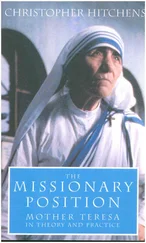The blood libel totters on shoulders of other giant misconceptions, of course, especially the notion, widely accepted at the time, that the various constituents of the human body possess magical and medicinal power. This explains the acceptance of similar accusations leveled at witches, such as the belief that candles made from human fat could render a man invisible while lighting up his surroundings. One wonders just how many a thief was caught striding through his neighbor’s foyer in search of plunder, bearing a malodorous candle confidently aloft, before these miraculous tools of subterfuge fell out of fashion.
But for sheer gothic absurdity nothing surpasses the medieval concern over host desecration, the punishment of which preoccupied pious Christians for centuries. The doctrine of transubstantiation was formally established in 1215 at the Fourth Lateran Council (the same one that sanctioned the use of torture by inquisitors and prohibited Jews from owning land or embarking upon civil or military careers), and thereafter became the centerpiece of the Christian (now Catholic) faith. (The relevant passage from The Profession of Faith of the Roman Catholic was cited in chapter 2.) Henceforth, it was an indisputable fact of this world that the communion host is actually transformed at the Mass into the living body of Jesus Christ. After this incredible dogma had been established, by mere reiteration, to the satisfaction of everyone, Christians began to worry that these living wafers might be subjected to all manner of mistreatment, and even physical torture, at the hands of heretics and Jews. (One might wonder why eating the body of Jesus would be any less of a torment to him.) Could there be any doubt that the Jews would seek to harm the Son of God again, knowing that his body was now readily accessible in the form of defenseless crackers? Historical accounts suggest that as many as three thousand Jews were murdered in response to a single allegation of this imaginary crime. The crime of host desecration was punished throughout Europe for centuries.
It is out of this history of theologically mandated persecution that secular anti-Semitism emerged. Even explicitly anti-Christian movements, as in the cases of German Nazism and Russian socialism, managed to inherit and enact the doctrinal intolerance of the church. Astonishingly, ideas as spurious as the blood libel are still very much with us, having found a large cult of believers in the Muslim world.
The Holocaust
The National Socialism of all of us is anchored in uncritical loyalty, in the surrender to the Fuhrer that does not ask for the why in individual cases, in the silent execution of his orders. We believe that the Fuhrer is obeying a higher call to fashion German history. There can be no criticism of this belief.
—RUDOLF HESS, IN A SPEECH, JUNE 1934
The rise of Nazism in Germany required much in the way of “uncritical loyalty.” Beyond the abject (and religious) loyalty to Hitler, the Holocaust emerged out of people’s acceptance of some very implausible ideas.
Heinrich Himmler thought the SS should have leeks and mineral water for breakfast. He thought people could be made to confess by telepathy. Following King Arthur and the round table, he would have only twelve people to dinner. He believed that Aryans had not evolved from monkeys and apes like other races, but had come down to earth from the heavens, where they had been preserved in ice from the beginning of time. He established a meteorology division which was given the task of proving this cosmic ice theory. He also thought he was a reincarnation of Heinrich the First. Himmler was an extreme case: the picture is perhaps one of someone quite mad. But one of his characteristics was much more widely shared—his mind had not been encouraged to grow. Filled with information and opinion, he had no critical powers.
At the heart of every totalitarian enterprise, one sees outlandish dogmas, poorly arranged, but working ineluctably like gears in some ludicrous instrument of death. Nazism evolved out of a variety of economic and political factors, of course, but it was held together by a belief in the racial purity and superiority of the German people. The obverse of this fascination with race was the certainty that all impure elements—homosexuals, invalids, Gypsies, and, above all, Jews—posed a threat to the fatherland. And while the hatred of Jews in Germany expressed itself in a predominately secular way, it was a direct inheritance from medieval Christianity. For centuries, religious Germans had viewed the Jews as the worst species of heretics and attributed every societal ill to their continued presence among the faithful. Daniel Goldhagen has traced the rise of the German conception of the Jews as a “race” and a “nation,” which culminated in an explicitly nationalistic formulation of this ancient Christian animus. Of course, the religious demonization of the Jews was also a contemporary phenomenon. (Indeed, the Vatican itself perpetuated the blood libel in its newspapers as late as 1914.) Ironically, the very fact that Jews had been mistreated in Germany (and elsewhere) since time immemorial—by being confined to ghettos and deprived of civic status—gave rise to the modern, secular strand of anti-Semitism, for it was not until the emancipation efforts of the early nineteenth century that the hatred of the Jews acquired an explicitly racial inflection. Even the self-proclaimed “friends of the Jews” who sought the admission of Jews into German society with the full privileges of citizenship did so only on the assumption that the Jews could be reformed thereby and rendered pure by sustained association with the German race. Thus, the voices of liberal tolerance within Germany were often as anti-Semitic as their conservative opponents, for they differed only in the belief that the Jew was capable of moral regeneration. By the end of the nineteenth century, after the liberal experiment had failed to dissolve the Jews in the pristine solvent of German tolerance, the erstwhile “friends of the Jews” came to regard these strangers in their midst with the same loathing that their less idealistic contemporaries had nurtured all along. An analysis of prominent anti-Semitic writers and publications from 1861 to 1895 reveals just how murderous the German anti-Semites were inclined to be: fully two-thirds of those that purported to offer “solutions” to the “Jewish problem” openly advocated the physical extermination of the Jews—and this, as Goldhagen points out, was several decades before the rise of Hitler. Indeed, the possibility of exterminating a whole people was considered before “genocide” was even a proper concept, and long before killing on such a massive scale had been shown to be practically feasible in the First and Second World Wars.
While Goldhagen’s controversial charge that the Germans were Hitler’s “willing executioners” seems generally fair, it is true that the people of other nations were equally willing. Genocidal anti-Semitism had been in the air for some time, particularly in Eastern Europe. In the year 1919, for instance, sixty-thousand Jews were murdered in Ukraine alone. Once the Third Reich began its overt persecution of Jews, anti-Semitic pogroms erupted in Poland, Rumania, Hungary, Austria, Czechoslovakia, Croatia, and elsewhere.
With passage of the Nuremberg laws in 1935, the transformation of German anti-Semitism was complete. The Jews were to be considered a race, one that was inimical to a healthy Germany in principle. As such, they were fundamentally irredeemable, for while one can cast away one’s religious ideology, and even accept baptism into the church, one cannot cease to be what one is. And it is here that we encounter the overt complicity of the church in the attempted murder of an entire people. German Catholics showed themselves remarkably acquiescent to a racist creed that was at cross-purposes with at least one of their core beliefs: for if baptism truly had the power to redeem, then Jewish converts should have been considered saved without residue in the eyes of the church. But, as we have seen, coherence in any system of beliefs is never perfect—and the German churches, in order to maintain order during their services, were finally obliged to print leaflets admonishing their flock not to attack Jewish converts during times of worship. That a person’s race could not be rescinded was underscored as early as 1880, in a Vatican-approved paper: “Oh how wrong and deluded are those who think Judaism is just a religion, like Catholicism, Paganism, Protestantism, and not in fact a race, a people, and a nation! …For the Jews are not only Jews because of their religion… they are Jews also and especially because of their race.” The German Catholic episcopate issued its own guidelines in 1936: “Race, soil, blood and people are precious natural values, which God the Lord has created and the care of which he has entrusted to us Germans.”
Читать дальше












